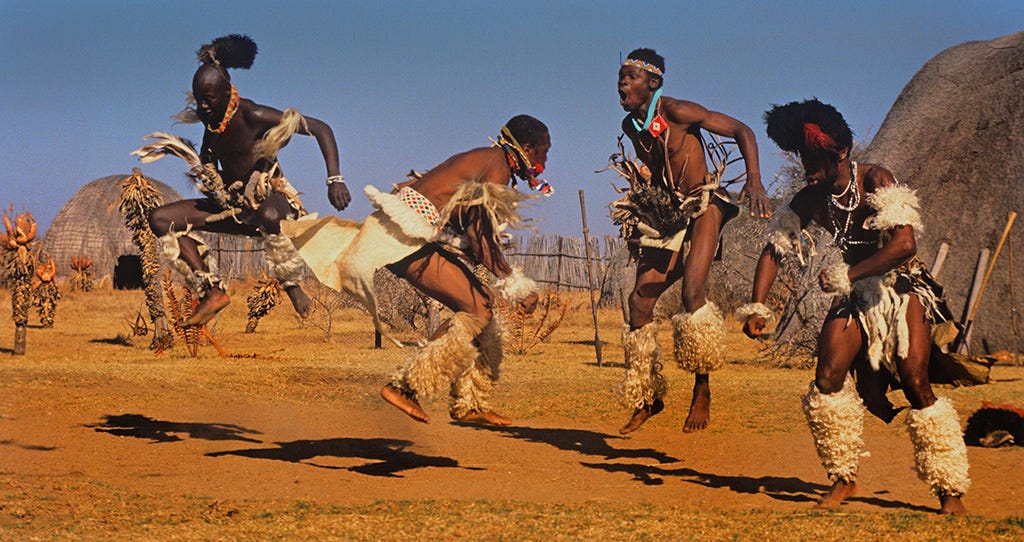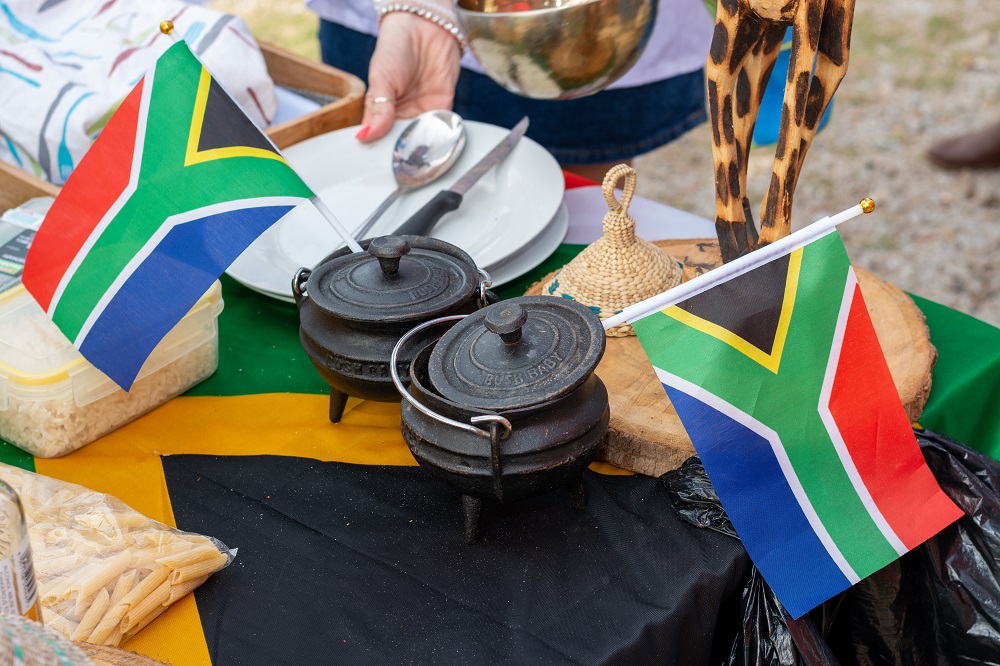South African Culture Today Fundamentals Explained
South African Culture Today Fundamentals Explained
Blog Article
South African Culture Today - Questions
Table of ContentsSouth African Culture Today Can Be Fun For AnyoneThe Only Guide for South African Culture TodayLittle Known Facts About South African Culture Today.Fascination About South African Culture TodayA Biased View of South African Culture TodayFacts About South African Culture Today Uncovered
A matter of relevance in Zambian towns is the passing away of loved ones. All participants of the town placed cash, time and effort with each other for the funeral of the deceased.Music and dancing is a really vital facet of the Zambian society. The numerous tribal systems have their own dance types; nonetheless, makishi is common among all tribes.
The Single Strategy To Use For South African Culture Today
When it concerns music, drums are used the most, with a range of drumming ceremonies. In Zambia, majority of the individuals are Christian; Protestant and Roman Catholic. There are little teams of Muslims and Hindus, with the remainder adhering to neighborhood indigenous tribal beliefs.

South African heritage and society is greatly varied, and contains numerous different teams of individuals who each have their own customs and beliefs. Having such a diversity of individuals and societies is what makes South Africa so special. In truth feeling of the expression, we are a rainbow nation.
Making it the 7th on the listing of countries with the most Portuguese people in it outside of Portugal. Portuguese is not just a culture, yet it is likewise a language and a citizenship. Portuguese individuals originate from the nation of Portugal in Europe, nevertheless, due to Portugal (like many other nations in Europe) discovering the world and conquering other nations during the 15th 20th centuries, South Africa has what we call Portuguese South African's living in it.
The Buzz on South African Culture Today
Among the noticeable attributes of the topography is a plateau that covers nearly 2 thirds of the facility of the nation. The plateau complex climbs towards the southeast, where it culminates in the Drakensberg array, component of an escarpment that separates the plateau from the seaside locations. The Drakensburg consists of Champagne Castle, the highest possible height in the nation.
The area north of the Witwatersrand, called the bushveld, slopes downward from eastern to west towards the Limpopo River, which develops the international border. The western area of the plateau, the middleveld, additionally descends in the direction of the west and varies in altitude between the highveld and bushveld. Between the Drakensburg and the eastern and southern coastline, the land comes down to the sea.
Nearer the coastline there is a low-lying level called the eastern lowveld. Southwest of the plateau the country comes to be considerably more dry, giving way to the stony desert of the Great Karroo, approached the eastern by the lower, much better sprinkled plateau of the Little Karroo. Dividing the completely dry southern interior from the sandy coastal of the southerly shore and West Cape is another variety, the Langeberg.
Some Known Details About South African Culture Today
The country's racially, ethnically, and politically separated history has created national and subnational icons that still work as symbols of the nation, and others signs that are accepted only by specific teams. The monoliths to white settler conquest and political prominence, such as the Afrikaner Voortrekker ("pioneer") Monument in Pretoria and the Rhodes Monument honoring the British colonial realm builder and Cape head of state Cecil Rhodes, remain sectarian symbols.
The very first modern residents were the San ("bushman") hunter-gatherers and the Khoi ("Hottentot") individuals, who herded livestock (South African culture today). The San might have been present find for hundreds of years and left proof of their existence in hundreds of old cavern paintings ("rock art"). Bantu-speaking clans that were the ancestors of the Nguni (today's amaZulu, amaXhosa, amaSwazi, and vaTsonga peoples) and Tswana-Sotho language teams (today's Batswana and Southern and Northern Basotho) moved below east Africa as early as the fifteenth century

The two previous republics of the Orange Free State and Transvaal (South African Republic) were developed by Afrikaner inhabitants that defeated and dispossessed the Basotho and Batswana. Lesotho would certainly have been forcibly integrated into the Orange Free State without the expansion of British security in 1869. The supreme marriage of the nation resulted from the South African War (18991902) in between the British and the 2 Afrikaner republics, which reduced the nation to mess up at the beginning of the twentieth century.
Afrikaners historically considered themselves the just real South Africans and, while granting full citizenship to all residents of European descent, rejected that status to individuals of color until the autonomous transition of 1994. British South Africans maintain a feeling of social and social link to Great Britain without damaging their identity as South Africans.
Get This Report on South African Culture Today
The variety and fragmentation within ethnic collections and the balance of tensions in between those groups throughout the twentieth century avoided interethnic civil conflict. While intergroup tensions over resources, privileges, and political supremacy continue to be, those problems are as most likely to match Zulu against Zulu as Zulu against Xhosa or African versus Afrikaner.
From my blog colonial India, British sellers and administrators brought the bent metal ornamental roofs and slim shoelace work pillars that still epitomize the verandas of homes arounds and cities throughout the nation. Homes of praise add an essential building element also in the smallest communities. Along with the soaring steeples and classic stonework of Afrikaans Dutch Reformed churches, Anglican churches, synagogues, mosques, and Hindu shrines supply selection to the spiritual building scene.

Butchering and the developing of standard cereal beer are crucial in securing the engagement and goodwill of the ancestors who are thought about the guardians of excellent fortune, success, and well-being. Indian communities keep their native culinary customs and use them on Islamic and Hindu routine and ritualistic occasions. Afrikaners and Coloured people gather at weekends and unique celebrations at multifamily barbecues called braais, where area bonds are reinforced.
Because this was the key financial business of both black Africans and white homesteaders, problem between those teams fixated the ownership of grazing land and livestock. In 1867, the biggest diamond down payments worldwide were uncovered at Kimberley in the west central location. The wealth from those areas assisted fund the exploitation of the greatest gold coral reef in the world, click over here now which was found on the Witwatersrand in 1886.
South African Culture Today Fundamentals Explained
This resulted in misconceptions and intentional misrepresentation in the transactions of white settlers and federal government officials with African chiefs during the colonial duration (South African culture today). In the establishment of African gets, some aspects of communal and mainly "tribal trust fund" land tenure were maintained, and also in white rural locations, forms of common tenure were still practiced in locations with African neighborhoods
After the autonomous makeover of 1994, programs for land restitution, redistribution, and reform were instituted, however development has actually been slow. The white minority still manages eighty percent of the land. Following farming land intrusions in Zimbabwe, the Division of Land Matters has promised to speed up land redistribution.
Report this page